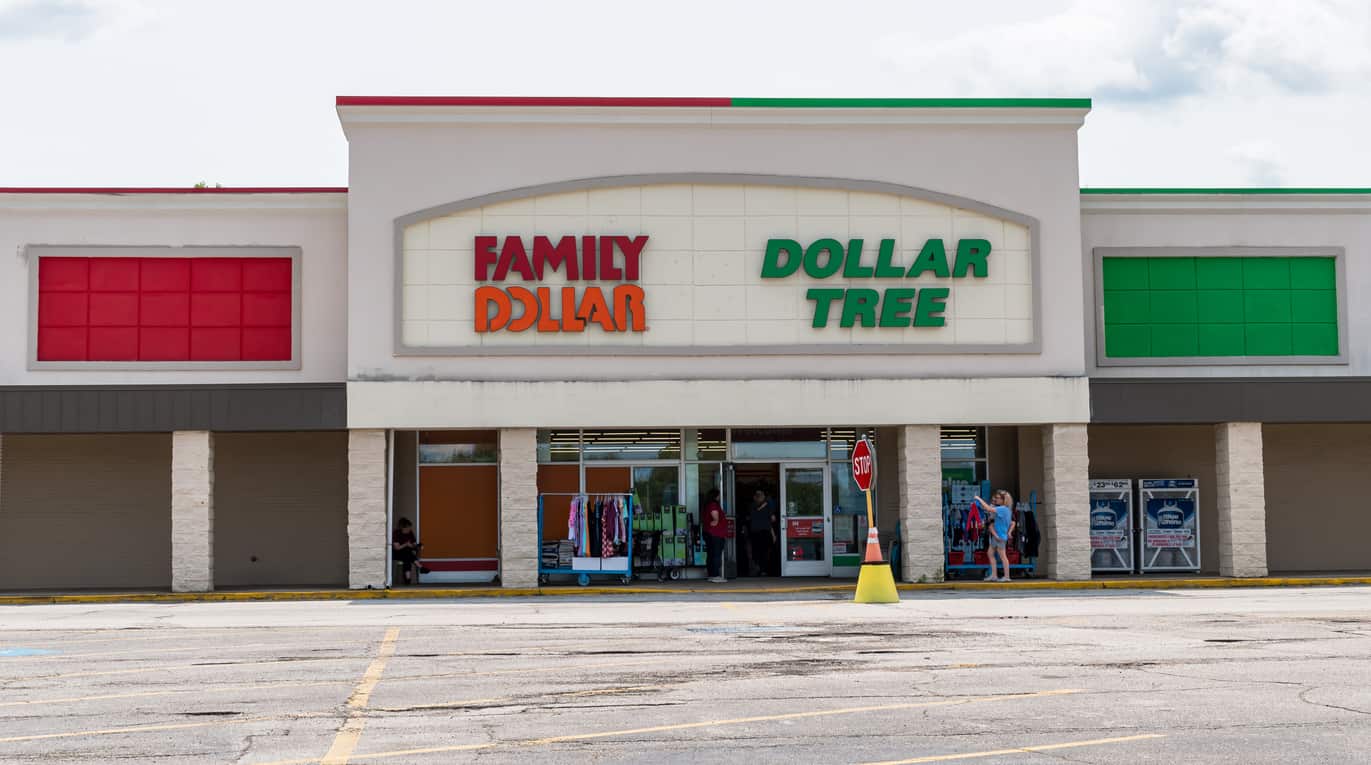
iStock.com/Althom
How Will Dollar Tree and Family Dollar Survive Their Growing Difficulties?
Dollar Tree and Family Dollar are closing 1,000 stores across the nation. This seemingly sudden move is sending ripples through the retail sector as 600 Family Dollar stores are scheduled to close during the first half of fiscal 2024. The announcement comes as part of a larger restructuring plan, with approximately 370 Family Dollar and 30 Dollar Tree stores set to close over the next several years as leases expire.
This significant development sheds light on a tumultuous period for Dollar Tree and Family Dollar, marred by product safety concerns and operational challenges. The chain faced a severe setback in 2022 when a Family Dollar distribution center in Arkansas became infested with rats, prompting a massive product recall and substantial losses. Despite efforts to clean up and reopen the facility, the company faced hefty penalties amounting to around $41 million in a settlement with the Justice Department.
These setbacks underscore broader issues within the company, culminating in an operating loss of $882 million for the fiscal year that ended on Feb. 3. Despite strategic changes at the executive level and investments in supply chain infrastructure, Dollar Tree continues to grapple with disappointing performance, particularly within the Family Dollar segment.
The decision to close hundreds of Family Dollar stores marks a significant pivot from Dollar Tree’s earlier strategy of rapid expansion, epitomized by its acquisition of Family Dollar in 2015.
Neil Saunders, managing director at GlobalData, characterized the move as Family Dollar waving the white flag in the competitive value grocery landscape, where rivals like Walmart, ALDI, and Dollar General have surged ahead. “Basically, almost ten years on, Dollar Tree is still sifting through the mess it inherited and has not been able to completely turn around,” he said. Despite attempts to enhance pricing and store experiences, Family Dollar has struggled to keep pace with its competitors, remaining a straggler in the value segment.
As of Feb. 3, 2024, Dollar Tree operates 8,415 stores, while Family Dollar operates 8,359 outlets, according to documents filed with the Securities and Exchange Commission (SEC). While a comprehensive list of closing Family Dollar stores is not yet available, Dollar Tree CEO Rick Dreiling emphasized the company’s methodical approach to addressing underperforming locations, considering factors such as individual store performance, local operating conditions, and broader strategic imperatives.
Dollar Tree’s recent changes are primarily affecting its U.S. stores, with no impact on Canadian branches. The company acquired Family Dollar in 2015 for over $8 billion after a bidding war, but integrating it has proven challenging. Furthermore, Dollar Tree announced a $950 million impairment charge for the Family Dollar trade name and a $1.07 billion goodwill charge. Family Dollar will also incur over $594 million in expenses for store closures or rebranding, essentially nullifying profits from the holiday season.
After Dollar Tree shared the news on Wednesday, its shares fell by more than 14%.
Dreiling expressed confidence that the rationalization of unprofitable stores would unlock significant value for the enterprise. However, the closure of 600 Family Dollar stores signals a pivotal moment for Dollar Tree, marking a strategic shift aimed at revitalizing its retail footprint and addressing longstanding challenges within its operations. As the retail landscape continues to evolve, Dollar Tree’s decision underscores the imperative for agility and adaptability in navigating an increasingly competitive market.
Discussion Questions
Considering Dollar Tree’s acquisition of Family Dollar in 2015, what specific operational and cultural barriers have hindered the successful integration of the two chains, and what alternative strategies could Dollar Tree have pursued to better leverage synergies and mitigate risks associated with the acquisition?
With Dollar Tree’s decision to close stores amid ongoing operational challenges and financial losses, what innovative approaches can retail executives adopt to enhance store performance, customer experiences, and competitive positioning in an era defined by evolving consumer preferences and intensifying market dynamics?
